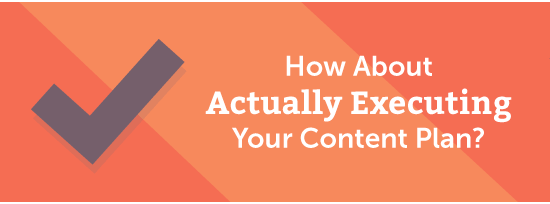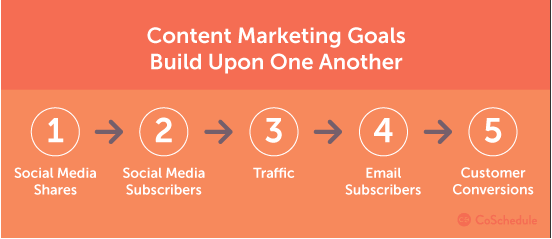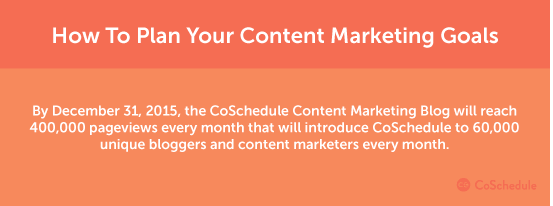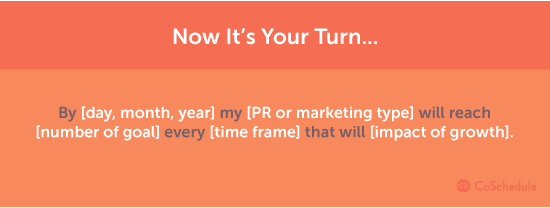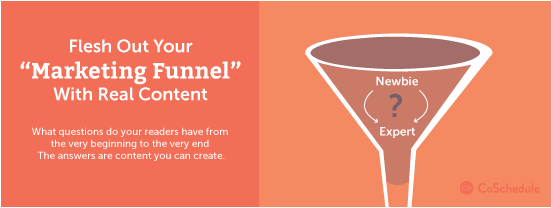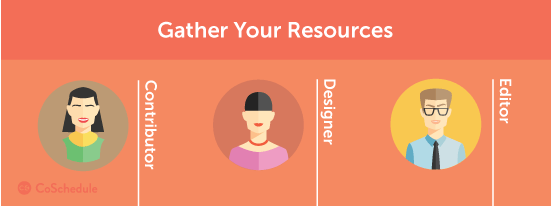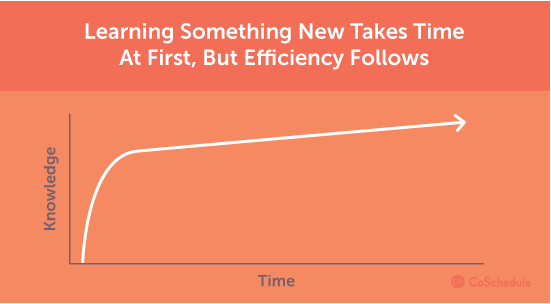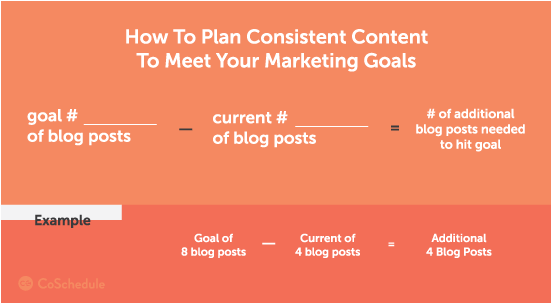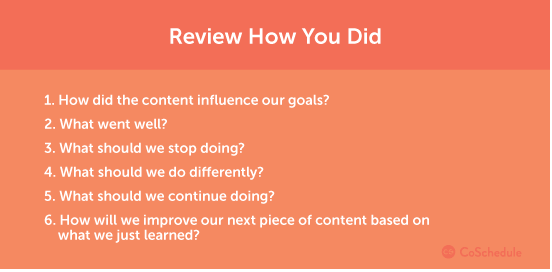By Nathan Ellering
Earlier today, Laura Petrolino wrote a blog post about the buyer’s journey.
It was one of the few articles I’ve seen that answers the question on how to create content that follows a purchase decision.
I mean, how many more times are you willing to read a post about content marketing that begins with “know your audience”?
Any post I read that begins with that intro makes me cringe.
Don’t we all know that already?
You know your audience and you know the kinds of messages you should be creating for different stages of the marketing funnel.
Laura started that this morning and I’d like to follow-up with how to execute your content plan.
A Content Plan Starts With a Measurable Goal
You should always start with a goal that will drive every decision you make going forward.
For example, some goals might be to increase:
- Social media shares.
- Social media subscribers
- Traffic.
- Email subscribers.
- Customer conversions.
Each of these builds on to the other.
It’s helpful to have goals for all of these metrics to understand the correlation among them.
This will help you create a content plan and optimize it for each goal to measure its effectiveness.
Try a structure like this when you write your goals:
You can supplement your information into that structure:
And if you don’t know where to begin, define a few content types you will publish every week for three months to get a baseline for your its performance.
For example, publish one blog post per week on your blog, then measure the average post’s performance for social media shares, social media subscribers, traffic, email subscribers, and customer conversions.
From there, use this algorithm to plan your goals:
Takeaways
- Have a goal for your entire content plan.
- Know how every piece of content contributes to the goal.
- Have a plan to measure your success.
Flesh out Your “Marketing Funnel” With Real Content
Put yourself in your customers’ shoes, and write down every question they have along the way from being a newbie to an expert in your industry (and with your product).
Now organize all those questions in a chronological order.
If this were a perfect world, how would your audience step through your content from beginning to end that will result in them becoming a customer?
From there, answer every question.
Think of multiple bullet points here as there are probably dozens of answers to every question.
Those answers serve your content plan. Now you can see where there are gaps in your existing content, too, so you can fill those areas.
Note: Your readers will never experience your content this way. But. This serves as an excellent way to help them find you at whatever stage of decision making they’re currently working through.
Takeaways
- Find the patterns within your topics as questions your customers have.
- Organize the patterns from beginner to expert.
- Answer the questions with bulleted lists.
- Turn the bulleted lists into content ideas.
Gather Your Resources
Begin by knowing the skills you need to publish awesome content:
- Write.
- Design.
- Optimize.
- Publish.
- Share.
- Promote.
- Repurpose.
You can do all of that with as little as one person, but an optimal number is three:
- Contributor to write the content.
- Designer to enhance it.
- Editor to optimize, publish, share, promote, and repurpose it.
There is no reason to include higher-ups in your approval process. That’s your editor’s responsibility.
That’s why this point is so important: Agree with all the doers here—and their managers—that this is exactly the workflow you’ll follow from ideation to published content.
Takeaways
- Know who will help you and each person’s responsibilities.
- Agree on a simple, efficient workflow.
Plan Your Publishing Frequency
The best advice here is to start slow.
New processes take time to learn, so it’s likely that at first, the team will need to commit more time to produce content simply because they’ve never done this before.
And that’s OK.
From here, though, you’ll plan a publishing frequency that will help you reach your goals.
When you establish your content plan, the reach of every piece you publish will grow.
But here’s a simple model to help you estimate a good publishing frequency to shoot for based on how your current content contributes to your goals:
Now, you can slowly build your momentum to publish more content.
Think of this like running a marathon—you don’t just wake up one day and run 26.2 miles. It takes training for you and your team to build up your publishing endurance.
Takeaways
- Agree on a publishing frequency with your team.
- Publish less content at the beginning to get the hang of a new process.
- Predict a publishing frequency that will help you hit your goals and slowly ease into your advanced publishing schedule.
Plan and Create Your Content
Plan the answers you fleshed out for your marketing funnel as content on your editorial calendar.
Note: It’s good to have a mix of content from every part of the marketing funnel, so don’t just start from the beginning and work to the end. The content plan should have the beginning, middle, and end.
Now it’s time to put the team to work. Use a simple, task-based workflow as reminders for the team to complete their responsibilities for your content.
Takeaways
- Lay out all of your content in a single editorial calendar.
- Use a simple workflow to avoid overcomplicating the content creation process.
- Trust your team to fulfill their responsibilities.
Review How You Did
Your content plan can always improve. Set aside dedicated time to review your goals, plan, and execution.
Review these things for every piece you create:
If you continue to execute blindly without reviewing the metrics of how your content affects your goals, you miss out on valuable data to help you make meaningful, quick changes to improve your content plan.
Don’t be that person.
Takeaways
- Set aside time to review your content plan and execution with your team.
- Review what went well, what you should stop doing, and what you should do differently.
- Hold one another accountable to follow through with any changes.
If you need additional help, try this template to get started.
How do you execute your content plan?
